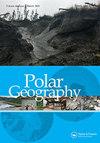气候变化对北极圈内关键基础设施影响的成本评估
IF 1.6
Q3 GEOGRAPHY, PHYSICAL
引用次数: 41
摘要
北极正经历着明显的气候和环境变化。这些变化对基础设施构成风险,影响偏远地区的可及性和发展,并给地方和区域预算增加额外压力。本研究估算了北极地区受气候变化影响的固定基础设施的成本,特别是永久冻土融化的影响。在RCP8.5情景下,基于六个CMIP5模式的气候数据强迫建立了土工模型,用于评估2050-2059年和2006-2015年间多年冻土土工特征的变化。具体国家的基础设施成本用于估计受影响的基础设施的价值。结果显示,环极永久冻土区的基础设施生命周期更新成本增加了27%。此外,超过14%的固定基础设施资产由于特定环境压力因素的变化而面临损坏的风险,例如永久冻土承载能力的丧失和地面冰融化导致的融化沉降。加拿大北部和西伯利亚西部地区预计将受到特别的影响,未来可能需要额外的年度支出,超过年度总产值的1%,以支持现有的基础设施。本文章由计算机程序翻译,如有差异,请以英文原文为准。
Assessment of the cost of climate change impacts on critical infrastructure in the circumpolar Arctic
ABSTRACT The Arctic is experiencing pronounced climatic and environmental changes. These changes pose a risk to infrastructure, impacting the accessibility and development of remote locations and adding additional pressures on local and regional budgets. This study estimates the costs of fixed infrastructure affected by climate change impacts in the Arctic region, specifically on the impacts of permafrost thaw. Geotechnical models are forced by climate data from six CMIP5 models and used to evaluate changes in permafrost geotechnical characteristics between the decades of 2050–2059 and 2006–2015 under the RCP8.5 scenario. Country-specific infrastructure costs are used to estimate the value of infrastructure affected. The results show a 27% increase in infrastructure lifecycle replacement costs across the circumpolar permafrost regions. In addition, more than 14% of total fixed infrastructure assets are at risk of damages due to changes in specific environmental stressors, such as loss of permafrost bearing capacity and thaw subsidence due to ground ice melt. Regions of Northern Canada and Western Siberia are projected to be particularly affected and may require additional annual spending in the excess of 1% of annual GRP to support existing infrastructure into the future.
求助全文
通过发布文献求助,成功后即可免费获取论文全文。
去求助
来源期刊

Polar Geography
GEOGRAPHY, PHYSICAL-
CiteScore
5.30
自引率
0.00%
发文量
13
期刊介绍:
Polar Geographyis a quarterly publication that offers a venue for scholarly research on the physical and human aspects of the Polar Regions. The journal seeks to address the component interplay of the natural systems, the complex historical, political, economic, cultural, diplomatic, and security issues, and the interchange amongst them. As such, the journal welcomes comparative approaches, critical scholarship, and alternative and disparate perspectives from around the globe. The journal offers scientists a venue for publishing longer papers such as might result from distillation of a thesis, or review papers that place in global context results from coordinated national and international efforts currently underway in both Polar Regions.
 求助内容:
求助内容: 应助结果提醒方式:
应助结果提醒方式:


